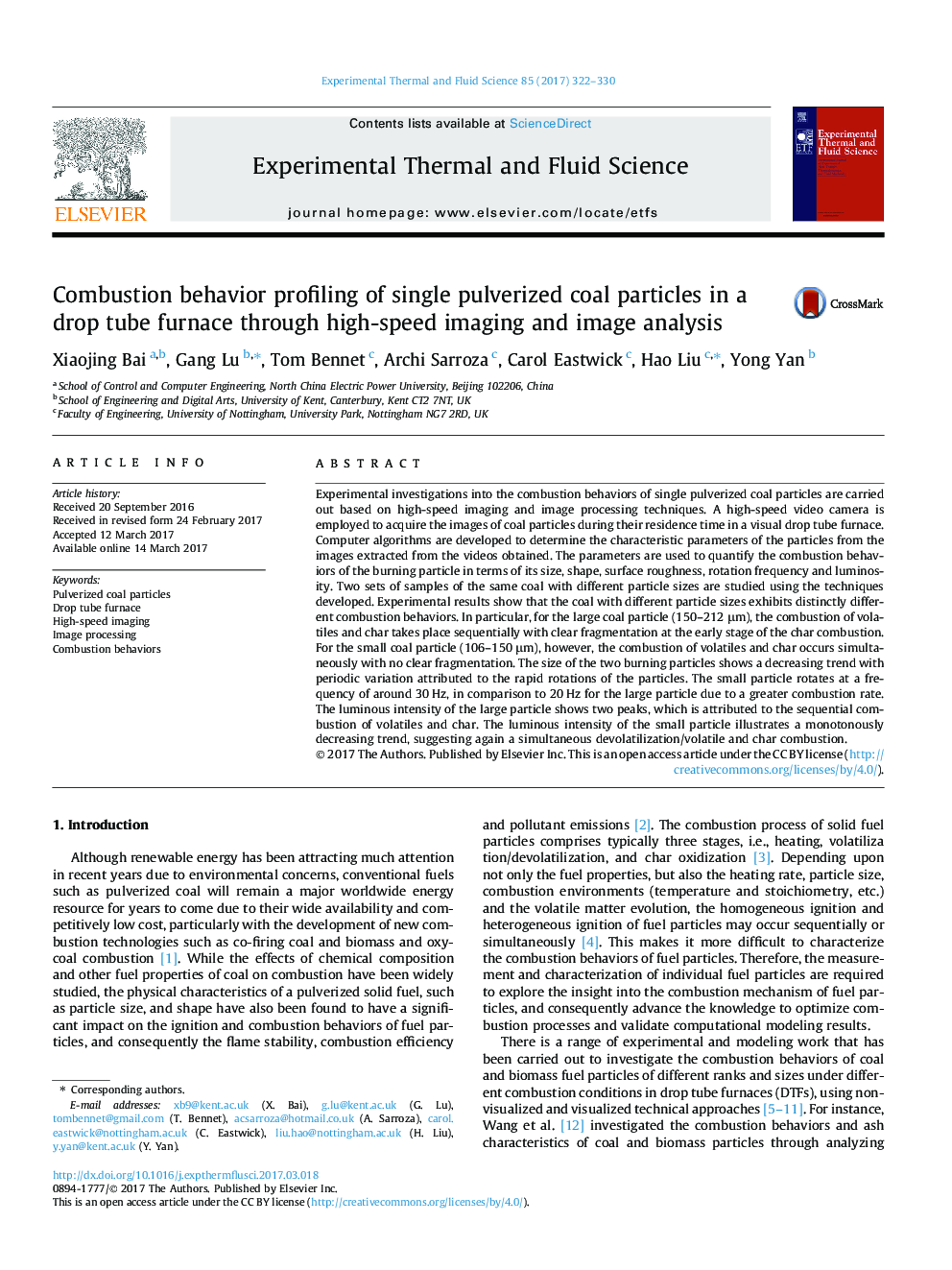| Article ID | Journal | Published Year | Pages | File Type |
|---|---|---|---|---|
| 4992676 | Experimental Thermal and Fluid Science | 2017 | 9 Pages |
â¢Combustion behaviors of individual coal particles studied through image processing.â¢Physical parameters defined and computed to characterize the burning particles.â¢Combustion behaviors of the coal particles depend clearly on particle size and shape.â¢Volatile and char combustion of the large coal particle takes place sequentially.â¢Volatile and char combustion of the small particle occurs at the same time.â¢Fragmentation and char combustion affect significantly the particle shape profiles.
Experimental investigations into the combustion behaviors of single pulverized coal particles are carried out based on high-speed imaging and image processing techniques. A high-speed video camera is employed to acquire the images of coal particles during their residence time in a visual drop tube furnace. Computer algorithms are developed to determine the characteristic parameters of the particles from the images extracted from the videos obtained. The parameters are used to quantify the combustion behaviors of the burning particle in terms of its size, shape, surface roughness, rotation frequency and luminosity. Two sets of samples of the same coal with different particle sizes are studied using the techniques developed. Experimental results show that the coal with different particle sizes exhibits distinctly different combustion behaviors. In particular, for the large coal particle (150-212 μm), the combustion of volatiles and char takes place sequentially with clear fragmentation at the early stage of the char combustion. For the small coal particle (106-150 μm), however, the combustion of volatiles and char occurs simultaneously with no clear fragmentation. The size of the two burning particles shows a decreasing trend with periodic variation attributed to the rapid rotations of the particles. The small particle rotates at a frequency of around 30 Hz, in comparison to 20 Hz for the large particle due to a greater combustion rate. The luminous intensity of the large particle shows two peaks, which is attributed to the sequential combustion of volatiles and char. The luminous intensity of the small particle illustrates a monotonously decreasing trend, suggesting again a simultaneous devolatilization/volatile and char combustion.
